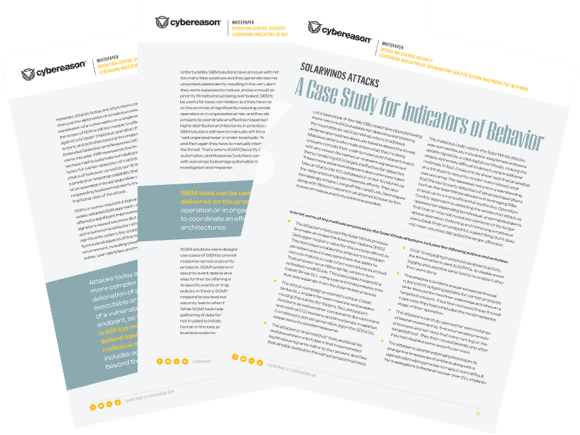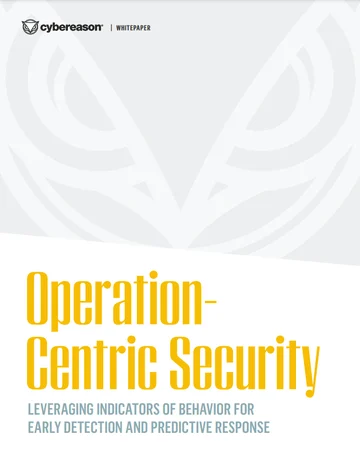Whitepaper
Operation-Centric Security
Leveraging Indicators of Behavior for Early Detection and Predictive Response
This whitepaper offers a deep-dive into the diminished value of Indicators of Compromise (IOCs) for early detection, defining and operationalizing Indicators of Behavior by establishing a common extensible language for their expression, a case study for leveraging Indicators of Behavior (IOBs) based on the SolarWinds attacks and more.


